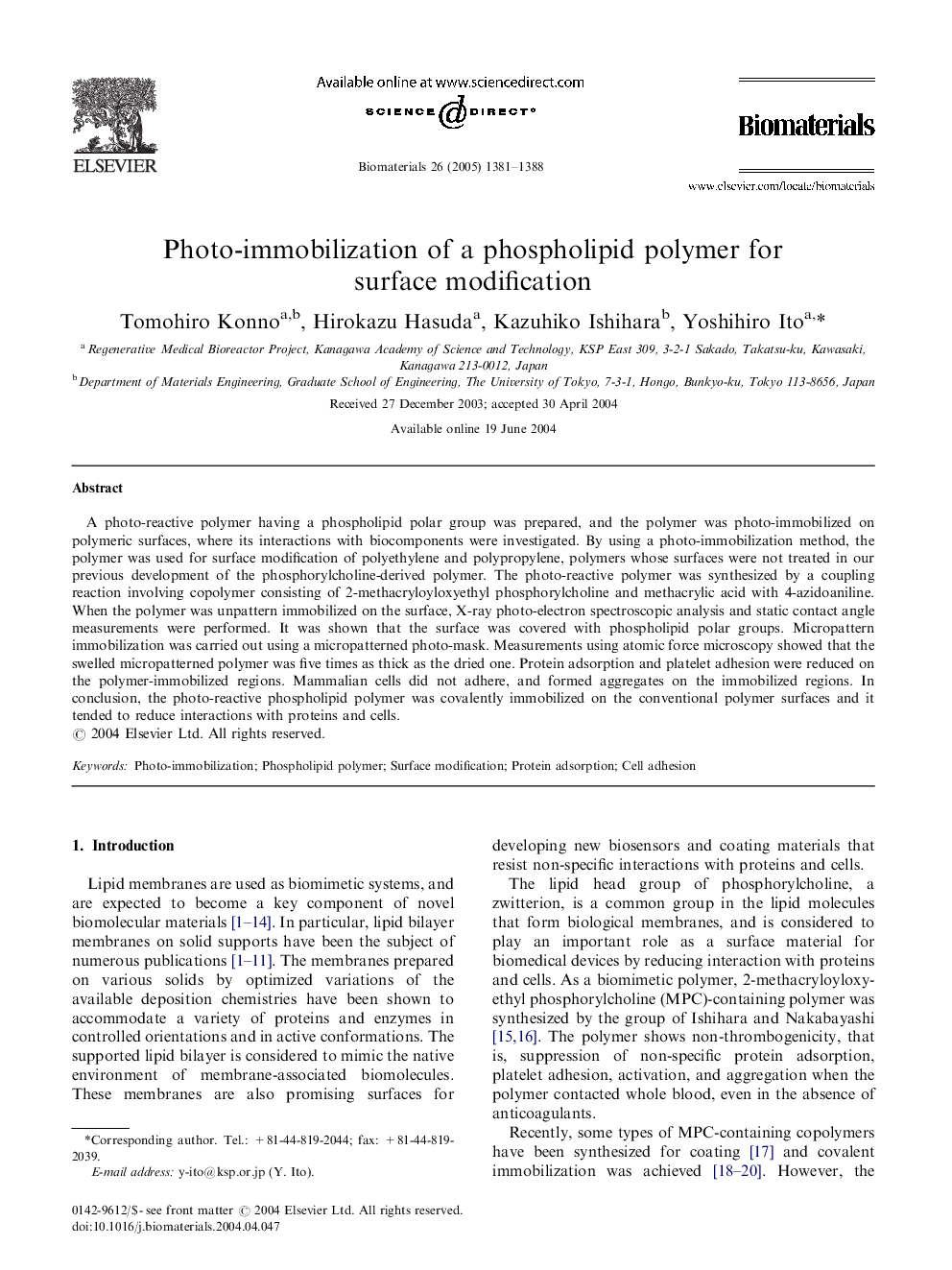| Article ID | Journal | Published Year | Pages | File Type |
|---|---|---|---|---|
| 10230219 | Biomaterials | 2005 | 8 Pages |
Abstract
A photo-reactive polymer having a phospholipid polar group was prepared, and the polymer was photo-immobilized on polymeric surfaces, where its interactions with biocomponents were investigated. By using a photo-immobilization method, the polymer was used for surface modification of polyethylene and polypropylene, polymers whose surfaces were not treated in our previous development of the phosphorylcholine-derived polymer. The photo-reactive polymer was synthesized by a coupling reaction involving copolymer consisting of 2-methacryloyloxyethyl phosphorylcholine and methacrylic acid with 4-azidoaniline. When the polymer was unpattern immobilized on the surface, X-ray photo-electron spectroscopic analysis and static contact angle measurements were performed. It was shown that the surface was covered with phospholipid polar groups. Micropattern immobilization was carried out using a micropatterned photo-mask. Measurements using atomic force microscopy showed that the swelled micropatterned polymer was five times as thick as the dried one. Protein adsorption and platelet adhesion were reduced on the polymer-immobilized regions. Mammalian cells did not adhere, and formed aggregates on the immobilized regions. In conclusion, the photo-reactive phospholipid polymer was covalently immobilized on the conventional polymer surfaces and it tended to reduce interactions with proteins and cells.
Keywords
Related Topics
Physical Sciences and Engineering
Chemical Engineering
Bioengineering
Authors
Tomohiro Konno, Hirokazu Hasuda, Kazuhiko Ishihara, Yoshihiro Ito,
